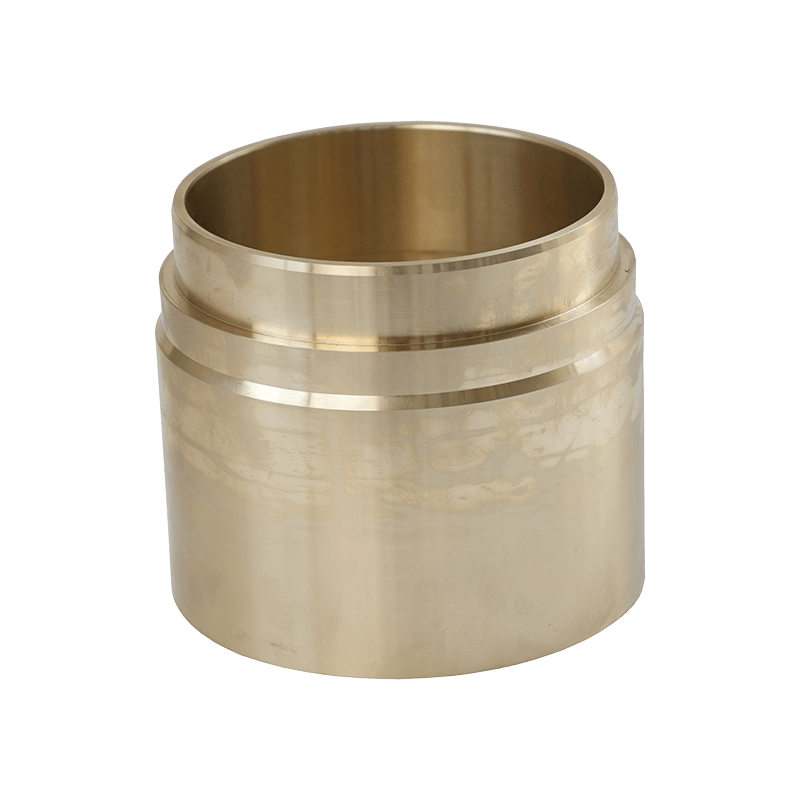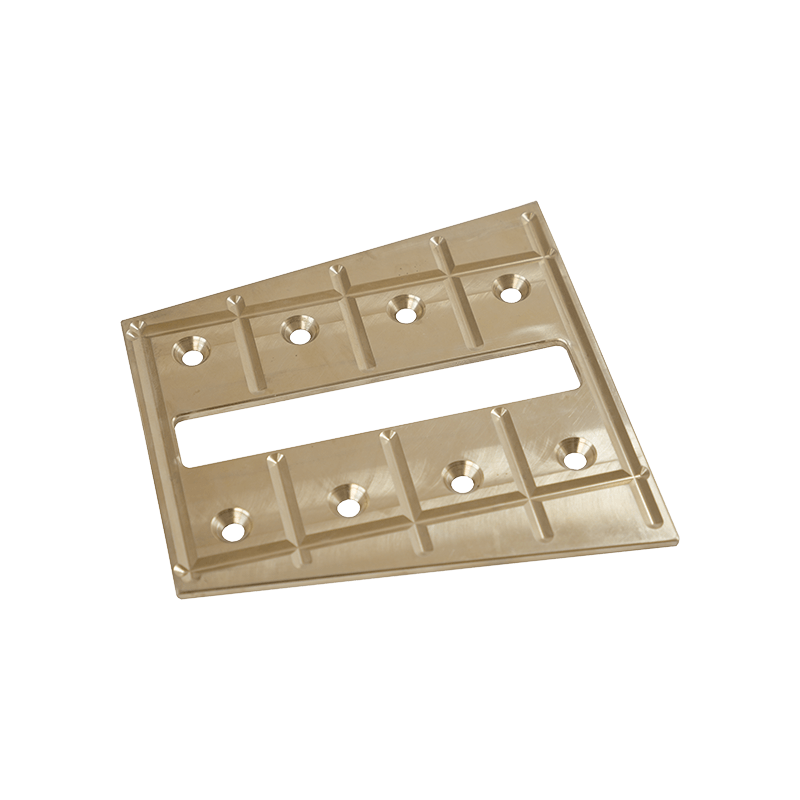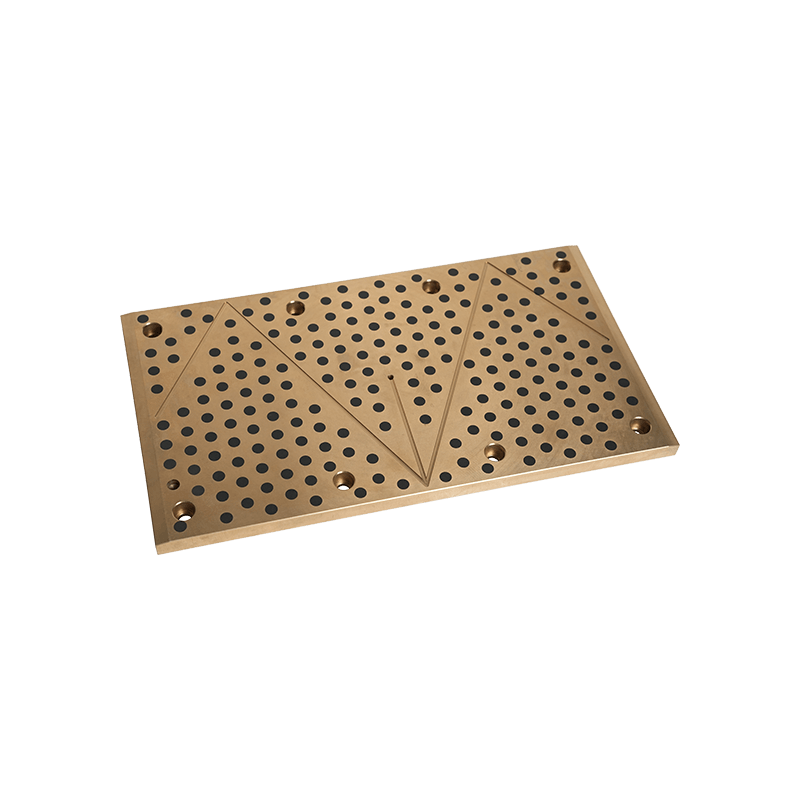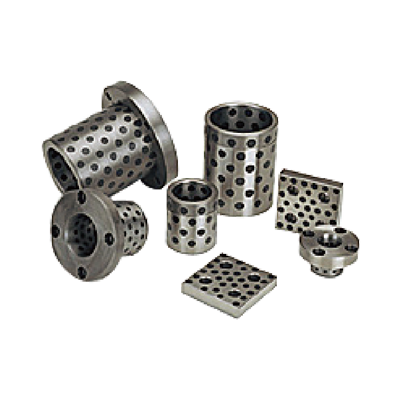Copper alloy selflubrication bearings are advanced mechanical components designed to reduce friction and wear between moving parts without the need for external lubrication. These bearings are especially useful in environments where traditional lubrication is difficult, undesirable, or impossible. The materials used in copper alloy selflubricating bearings combine the strength and conductivity of copper with embedded solid lubricants, resulting in a highperformance, longlasting solution for various industrial applications.
1. Base Material: Copper Alloys
The primary material used in these bearings is a copperbased alloy, which may include several different metal elements to enhance performance. Common copper alloys used include:
Bronze (CopperTin alloy): One of the most common materials, especially tin bronze (CuSn), known for its good wear resistance, corrosion resistance, and strength.
Brass (CopperZinc alloy): Often used in lighterload applications, brass offers good machinability and corrosion resistance.
Aluminum Bronze (CopperAluminum alloy): Offers excellent mechanical properties, high strength, and exceptional corrosion resistance—suitable for heavyduty applications.
Phosphor Bronze (CopperTinPhosphorus alloy): Provides good fatigue resistance and is often used in highspeed applications.
These copper alloys serve as the structural backbone of the bearing, providing mechanical strength, thermal conductivity, and resistance to deformation under pressure.
2. SelfLubricating Component: Solid Lubricants
What makes these bearings "selflubricating" is the inclusion of solid lubricants embedded into the copper alloy matrix. These materials release small amounts of lubricant during operation, reducing friction between the bearing and the shaft. Common selflubricating materials include:
Graphite: A widely used solid lubricant due to its high temperature tolerance and low coefficient of friction. Graphite plugs or particles are inserted into the copper alloy during the manufacturing process.
PTFE (Polytetrafluoroethylene): Also known as Teflon, PTFE offers extremely low friction and is chemically resistant. It’s sometimes combined with other fillers for improved performance.
MoS₂ (Molybdenum Disulfide): A solid lubricant with excellent performance under high loads and in vacuum environments.
ResinBased Composites: In some cases, synthetic polymers or resins filled with lubricants are used for specialized requirements.
These selflubricants are strategically distributed in the form of plugs, grooves, or pores throughout the copper alloy material to ensure consistent lubrication over time.
3. Structure and Manufacturing Techniques
Copper alloy selflubricating bearings are manufactured using several advanced techniques to ensure proper distribution of lubricants and structural integrity:
Plugged Graphite Bearings: Solid graphite plugs are inserted into predrilled holes in the bronze or copper alloy body.
Powder Metallurgy: A mix of copper alloy powder and solid lubricants is pressed and sintered to form a porous structure that can store and release lubricant.
Centrifugal Casting or Machining: Used for larger or more complex bearing shapes, followed by manual or automated insertion of lubricant plugs.
These processes result in a bearing that can operate in dry, dusty, or hightemperature environments where traditional lubricants would evaporate, degrade, or attract contaminants.
4. Performance Characteristics
Copper alloy selflubricating bearings offer several benefits, including:
MaintenanceFree Operation: No need for external oil or grease, reducing maintenance costs and downtime.
High Load Capacity: Thanks to the robust copper alloy base.
Good Thermal Conductivity: Helps dissipate heat during highspeed or highfriction operation.
Corrosion Resistance: Especially when aluminum bronze or phosphor bronze is used.
Low Friction and Wear: Due to the embedded solid lubricants, even in dryrunning conditions.
These properties make them ideal for use in hydraulic systems, construction machinery, automotive parts, marine environments, and heavy industrial machinery.
5. Environmental and Economic Advantages
From an environmental standpoint, selflubricating bearings help reduce the use of harmful oils and greases, which can contaminate ecosystems if leaked. They also extend equipment life, lower energy consumption due to reduced friction, and enhance overall system reliability.
Economically, although the initial cost of copper alloy selflubricating bearings may be higher than standard bearings, they pay off in the long term through reduced maintenance, fewer replacements, and improved machine uptime.
Copper alloy selflubrication bearings are highperformance components made from durable copperbased metals like bronze, brass, and aluminum bronze, combined with embedded solid lubricants such as graphite or PTFE. This unique material combination allows them to operate smoothly in harsh environments without additional lubrication. Their strength, longevity, and lowmaintenance nature make them a preferred choice in many industrial applications where traditional bearings would fail or require constant care.
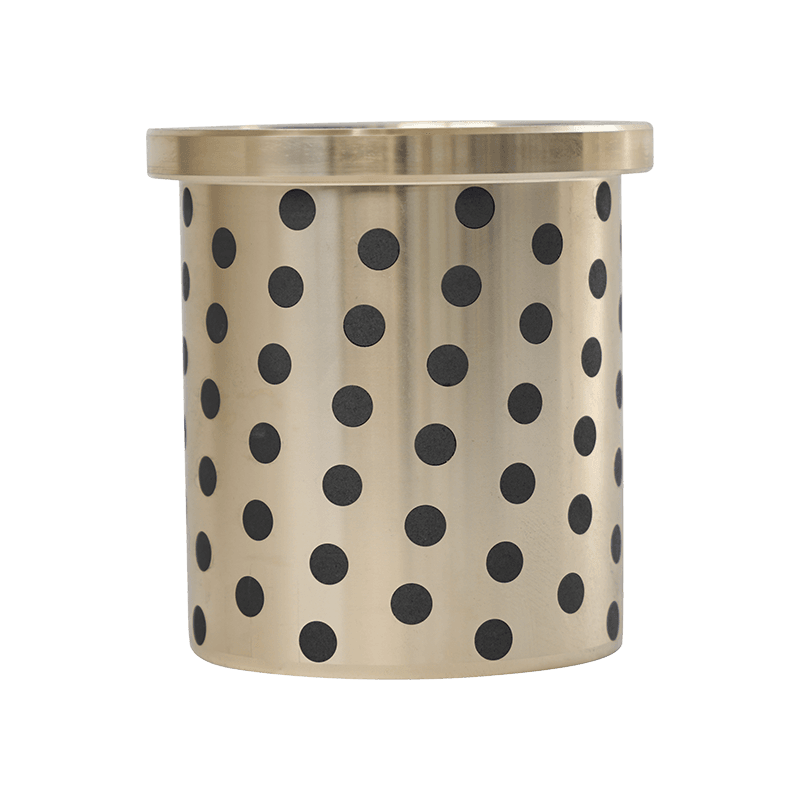

 English
English Deutsch
Deutsch Español
Español русский
русский

 +0086-513-88690066
+0086-513-88690066